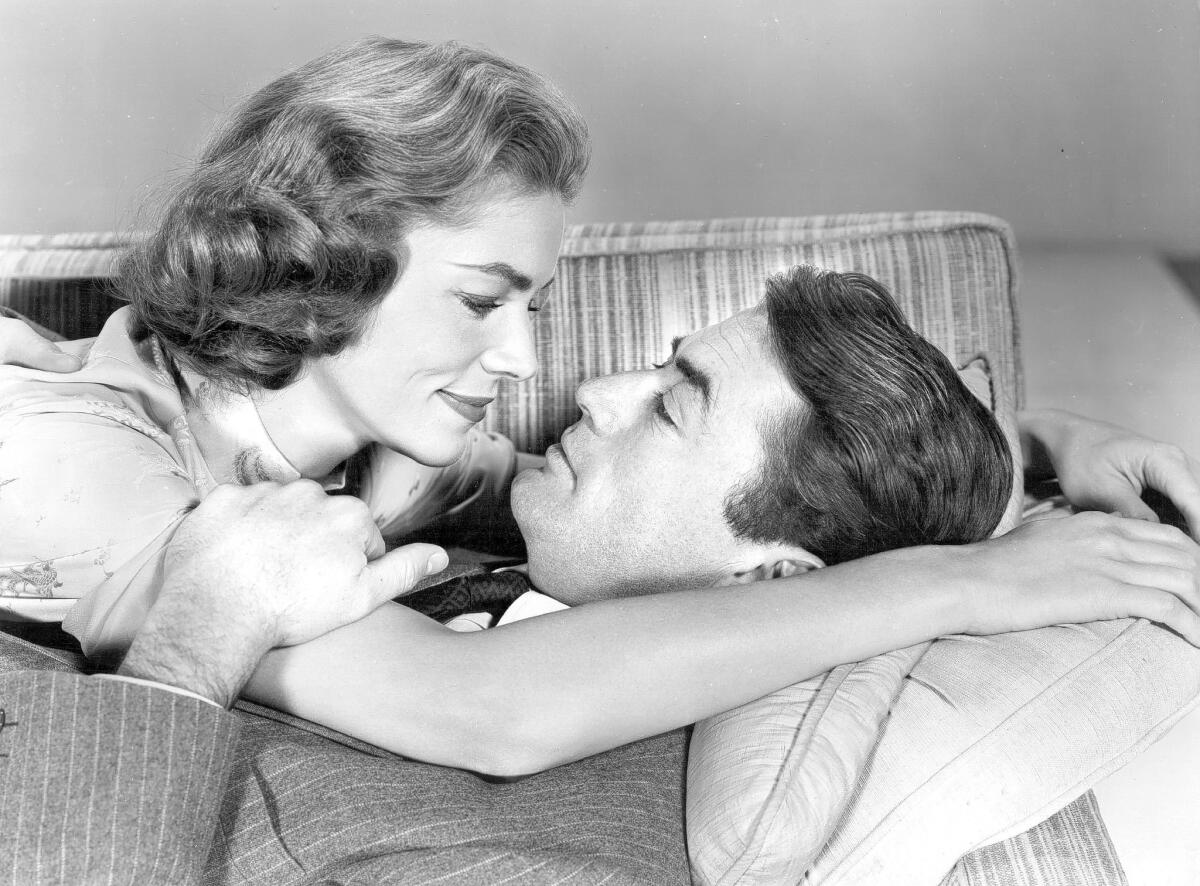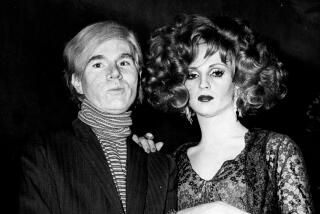Appreciation: Lauren Bacall’s voice resonated with women

The voice. If you heard it once, you never forgot. So distinctive was its smoky, sexual growl, you could pick it out of a lineup.
Its owner, Lauren Bacall, wrapped it around words, controlling them, making them slightly dangerous, making them do her bidding, along with the men, and it was usually men, who were hanging on to each one.
But Bacall, who died Tuesday at the grand old age of 89, was so much more than the voice. And more than an actress, she was a symbol of the kind of woman that postwar 1950s-era housewives would dream of becoming — and that the feminist movement would lionize. Intelligent, independent and, yes, a sexual being. But one in charge.
She was a spitfire from the start.
At 5 feet, 8½ inches, she was taller than the other young women making names in the movie business in the 1940s and ‘50s. She had an elegant, high-end style that made her a photographer’s favorite long before paparazzi became a bad word. But she wasn’t a classic beauty — those cheekbones, those come-hither eyes, the sense of entitlement that she radiated on screen made her seem dangerous, too hot to handle long before Hollywood tried, and failed, to handle her.
On screen, even after all these years, Bacall is still best known for her first film and her first husband. She was just 19 and Humphrey Bogart 44 when they began filming “To Have and Have Not.” Soon they were Bogie and Bacall, married not long after, and iconic almost immediately, whether they wanted to be or not. It was a great love, the kind that, well, they made movies about. His death at 57 of cancer did not end the romance or, at least, the public’s fascination with it.
For all the incredible poise and presence she brought in that first 1944 film, and the others she would do with Bogie before he died, Bacall registered immediately as a fierce woman in a time when that quality wasn’t highly valued in Hollywood. Alongside Bogart, she would protest the House Un-American Activities Committee’s targeting of actors. In the business, it marked her as difficult.
That she had a string of hits by the time she was 30, including “The Big Sleep” and “Key Largo,” should have ensured her marquee status. But it did not. In the years after Bogart’s death, there were a few notable films, including “North West Frontier,” but by the ‘60s she was more often taking guest spots on TV series, such as “Dr. Kildare.”
For years, Broadway would claim her, as the Great White Way has a habit of embracing difficult women. There Bacall would prove her acting mettle, winning a Tony for “Applause” in 1970, which would turn into an Emmy-nominated TV movie a few years later with its “All About Eve” story line. In 1981, she again won a Tony, for “Woman of the Year,” a role Katharine Hepburn, another iconic actress, had put her stamp on.
In the post-Bogie era — many, many years of it — she became more of a character actor on screen. As Lauren Bacall, legend, in a walk-on part in the sixth season of “The Sopranos,” she is literally punched out by Tony Soprano’s favorite bad-boy nephew, Christopher (Michael Imperioli), who steals her pricey celebrity gift bag. It was 2006, she was in her 80s, and she took the punch like a champ.
Even though at times she seemed underappreciated by the movie world, she was nearly always working. She was booked to film a crime movie when she died.
On film, there were multiple roles each year for many years. She would — fittingly — be one-half of a bickering married couple opposite Henry Fonda in the film adaptation of Helen Gurley Brown’s bestselling “Sex and the Single Girl” in 1964. She turned up as a rural woman helping protect Nicole Kidman’s troubled woman on the run in Lars von Trier’s “Dogville” in 2003.
Bacall was rarely vulnerable on screen. But it is there in the overlooked 1991 film “A Star for Two” opposite Anthony Quinn. They play lovers trying to rekindle a romance 40 years later, and the ache in her eyes is exquisite.
As a leading actress, Bacall, in a sense, was typecast early on. The sultry woman who was smarter than anyone else in the room — opposite Gregory Peck in 1957’s “Designing Woman,” as part of the trio of hotties alongside Marilyn Monroe and Betty Grable in 1953’s “How to Marry a Millionaire,” and the list goes on.
Whether she toplined the movie or was just a minor character, Bacall always owned any scene she was in. Not that she wasn’t generous to those playing opposite her — she was — but the eye just gravitated back toward her, to whatever that voice was saying.
There is a remarkable moment in “The Mirror Has Two Faces,” the 1996 film that would earn Bacall an Oscar nomination and a Golden Globe. As mother to Barbra Streisand’s newly-in-love professor, they are talking over morning coffee.
It’s a quiet scene but filled with pathos as Bacall, as the mother, looks at her daughter and says, “Awful thing to look back on your life and realize you’ve settled.”
Much of the moment’s power is that sense you have that Bacall never settled. She lived an exceptional life and, for all of its ups and downs — the marriage with actor Jason Robards that came later and ultimately came apart, the way Hollywood didn’t always make the most of her talent — none of it matters.
Bacall was Bacall through it all, and it doesn’t get any better than that.
Twitter: @BetsySharkey
More to Read
Only good movies
Get the Indie Focus newsletter, Mark Olsen's weekly guide to the world of cinema.
You may occasionally receive promotional content from the Los Angeles Times.







